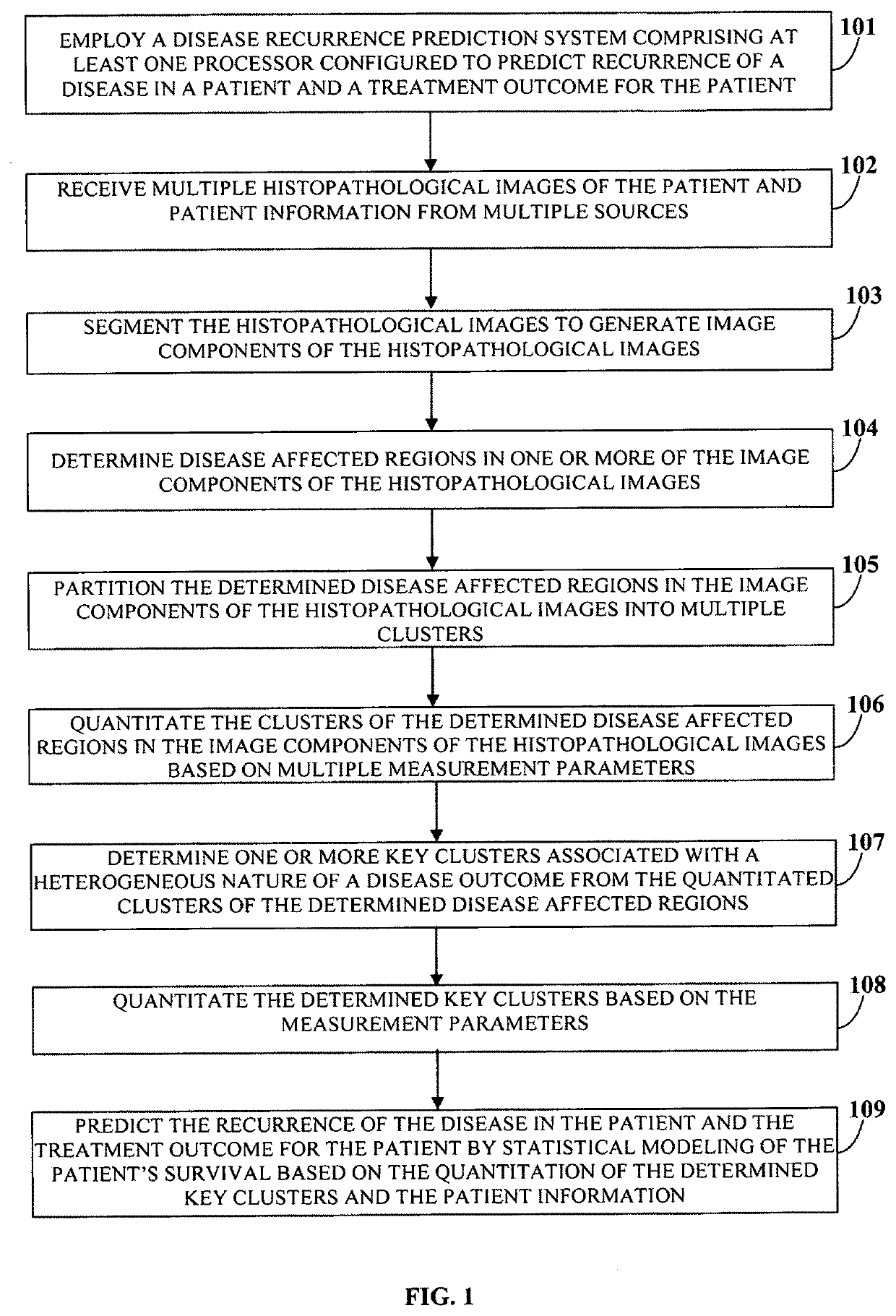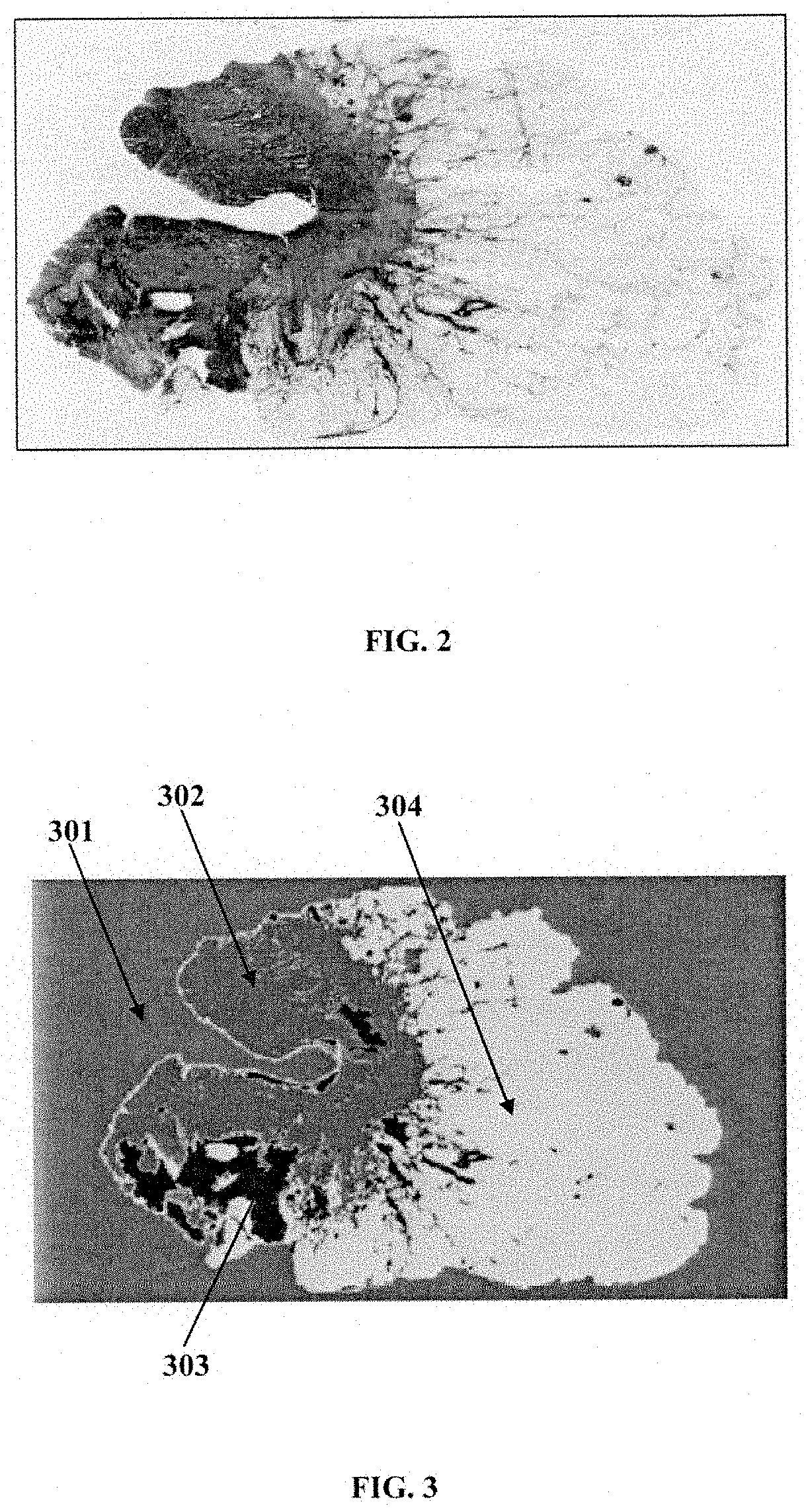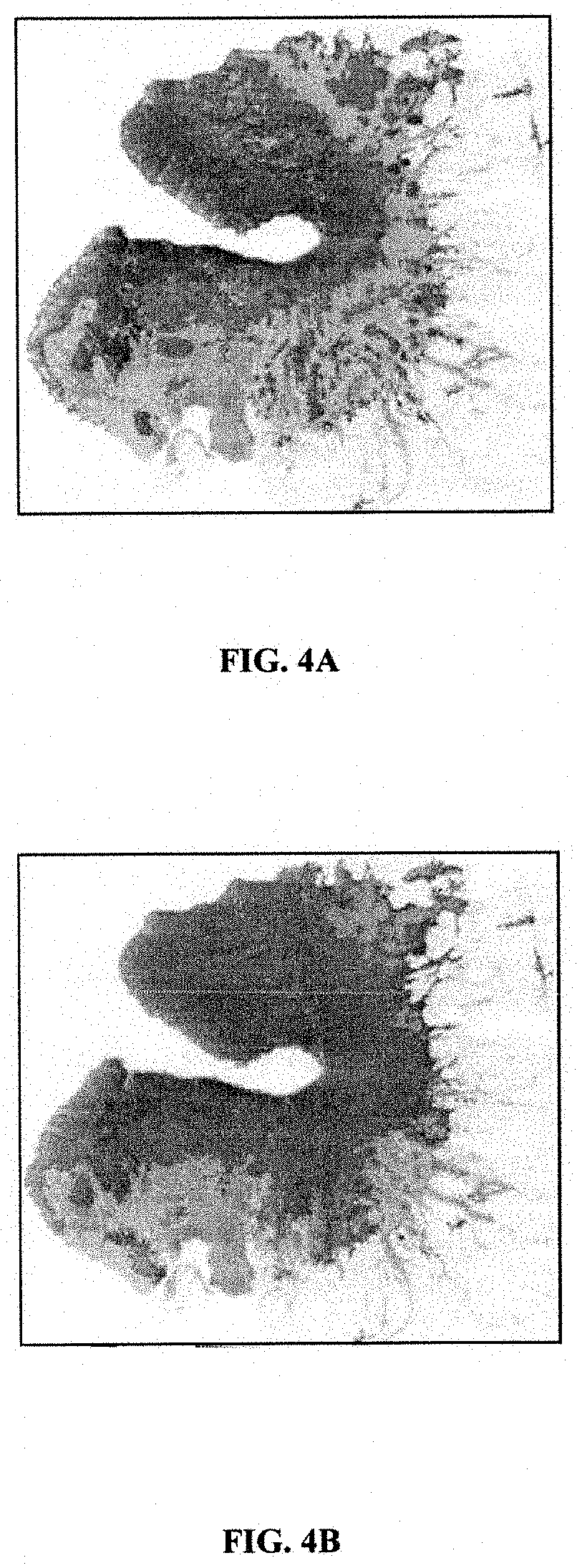Comparative cancer survival models to assist physicians to choose optimal treatment
a cancer survival model and cancer technology, applied in healthcare informatics, image analysis, image enhancement, etc., can solve the problems of inability to predict which patient's medical condition can recur and/or need additional therapy, and significant number of patients are still prone to disease recurrence and ultimately die from the disease,
- Summary
- Abstract
- Description
- Claims
- Application Information
AI Technical Summary
Benefits of technology
Problems solved by technology
Method used
Image
Examples
Embodiment Construction
[0017]FIG. 1 illustrates a computer implemented method for predicting recurrence of a disease in a patient and a treatment outcome for the patient. The computer implemented method disclosed herein employs 101 a disease recurrence prediction system comprising at least one processor configured to execute computer program instructions for predicting recurrence of a disease in a patient and a treatment outcome for the patient. The disease recurrence prediction system is implemented as a web based platform with a graphical user interface (GUI) for data input and treatment simulations. The web based platform is accessible by multiple users, for example, qualified users such as medical doctors, pathologists, clinicians, etc., via a network. The users can upload the patient's information into the disease recurrence prediction system using configurable templates via the GUI of the disease recurrence prediction system. The disease recurrence prediction system provides the users with a computa...
PUM
 Login to View More
Login to View More Abstract
Description
Claims
Application Information
 Login to View More
Login to View More - R&D
- Intellectual Property
- Life Sciences
- Materials
- Tech Scout
- Unparalleled Data Quality
- Higher Quality Content
- 60% Fewer Hallucinations
Browse by: Latest US Patents, China's latest patents, Technical Efficacy Thesaurus, Application Domain, Technology Topic, Popular Technical Reports.
© 2025 PatSnap. All rights reserved.Legal|Privacy policy|Modern Slavery Act Transparency Statement|Sitemap|About US| Contact US: help@patsnap.com



